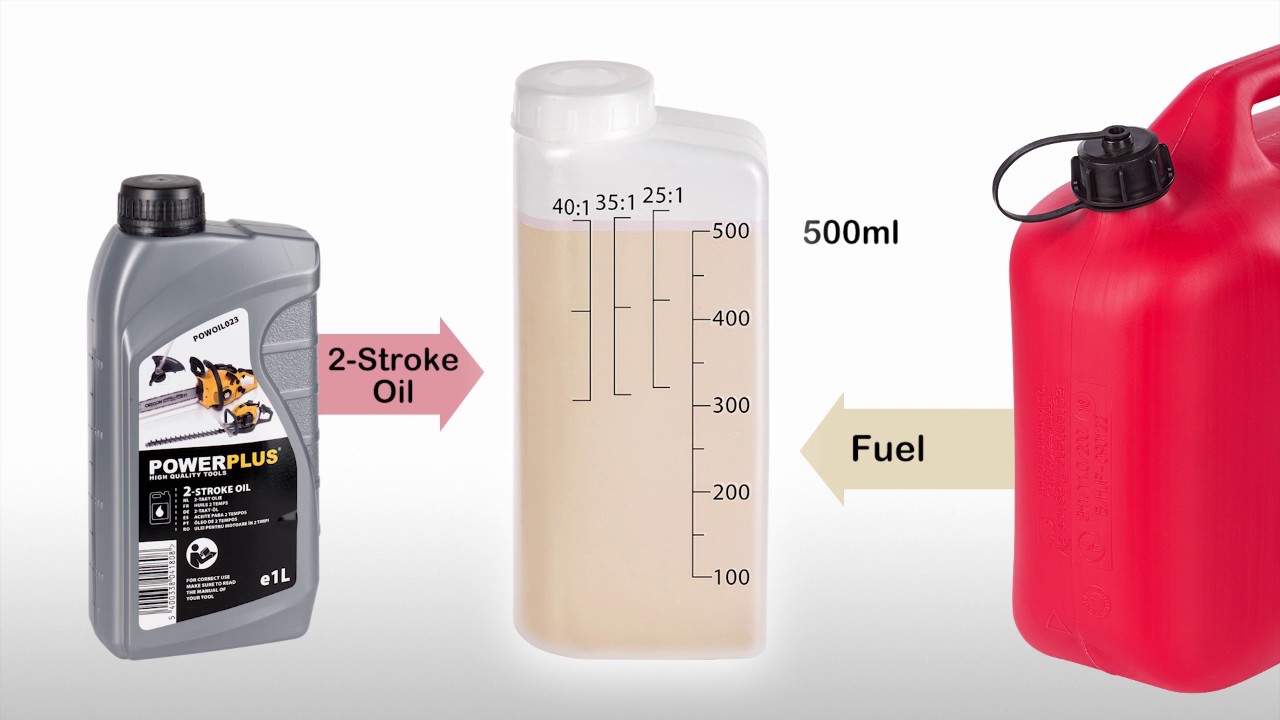Alright folks, been meaning to share this for a while. It’s one of those little jobs that seems simple, but if you get it wrong, well, you’re in for a headache. I’m talking about mixing fuel for those two-stroke engines. Got my string trimmer fired up the other day, and it reminded me I should probably walk you through how I do it.

You see, these little engines – your chainsaws, leaf blowers, some string trimmers – they don’t have a separate oil pan like your car. They need the oil mixed right into the gasoline. That’s how the engine parts get lubricated. Skip the oil, or get the mix wrong, and you’re gonna seize that engine up quicker than you can say “oops.” And trust me, that’s an expensive “oops.”
Getting Started: What I Grab
So, first things first, I gather my gear. It’s not much, but having the right stuff makes it easy:
- A clean fuel can: Super important. I have a small one, maybe a gallon or two, that I ONLY use for mixed fuel. Don’t want to mix it up with straight gas. I even label it with a big marker.
- Fresh gasoline: I try to use fresh, regular unleaded gasoline. Stuff that’s been sitting around for months can cause problems.
- Two-stroke engine oil: This is key. You gotta use oil specifically made for two-stroke engines. Not your car oil, not anything else. The bottle will say “2-stroke” or “2-cycle” oil.
- Something to measure the oil: Some oil bottles have a measuring section built in, which is handy. If not, a small, clean measuring cup works.
The All-Important Ratio
Now, this is where you gotta pay attention. The ratio of gas to oil. Most modern equipment runs on a 50:1 ratio (that’s 50 parts gas to 1 part oil) or sometimes 40:1. Your equipment’s manual is your best friend here. If you don’t have the manual, sometimes it’s printed right on the fuel cap or near it. The oil bottle will also have instructions for different ratios.
Getting this ratio right is crucial. Too little oil, and boom, engine damage. Too much oil, and it’ll run smoky, foul your spark plug, and just generally be a pain.
My Mixing Process
Okay, here’s how I actually do it. Let’s say I’m mixing for a 50:1 ratio and I want to mix one gallon of gas.

- First, I figure out how much oil I need. For 50:1, one gallon of gas (which is 128 fluid ounces) needs 2.6 fluid ounces of oil. Most oil bottles will have a little chart, or you can find calculators online, but I just remember the common ones.
- I pour the oil into the empty, clean fuel can first. I find it mixes a bit better this way.
- Then, I add the gasoline. So, I’ll pour in that one gallon of fresh gas.
- Once both are in, I cap the can tightly. And then I give it a good swirl and a gentle shake. Not like I’m making a cocktail for James Bond, just enough to mix it thoroughly. You want that oil evenly distributed in the gas.
And that’s pretty much it. Fuel’s mixed, ready to go into the trimmer or whatever I’m using.
Why I’m a Stickler for This Stuff
Now, you might think I’m being a bit fussy about all this. “It’s just a garden tool,” right? Well, let me tell you, I wasn’t always this careful. Years ago, my father-in-law, bless his heart, gave me his old chainsaw. Thing was a beast, but he wasn’t much for keeping manuals. He just said, “Yeah, just splash a bit of oil in the gas, she’ll be right.”
So, young and dumb me, I did just that. Went to the hardware store, grabbed some generic oil – probably the wrong kind, looking back – and just guessed at the amount. Poured it in, fired up the saw. It smoked like a chimney on a cold day! I mean, clouds of blue smoke. Coughed, sputtered, and eventually just died on me. I was so frustrated. Took it to a small engine repair shop, and the old guy behind the counter, real character, he just looked at it, sniffed the fuel tank, and said, “Son, you tryin’ to kill this thing or make it run?”
Turns out, I’d put way too much oil in, and probably not even the right spec. He cleaned it all out, showed me the proper oil, explained the ratios, and even gave me a little measuring cup. Said it was on the house if I promised to never “guess” again. That lesson stuck with me. It wasn’t just about the chainsaw; it was about respecting the tools, understanding how they work. That old guy probably saved me hundreds, if not thousands, in ruined equipment over the years. I even started reading manuals after that! Can you believe it? Me, reading instructions! My wife still teases me about it. But hey, my stuff runs, and it runs well. That’s what matters.
So yeah, after that little adventure, I got pretty religious about mixing my fuel right. It’s just not worth the hassle or the expense of fixing a seized engine. Take a few extra minutes, do it properly, and your tools will thank you for it by lasting a good long time.

Oh, and one last thing: always label your mixed fuel can clearly! You do not want someone accidentally putting straight gas into a two-stroke engine or mixed fuel into something that needs straight gas. That’s a whole other world of trouble. Happy mixing!
